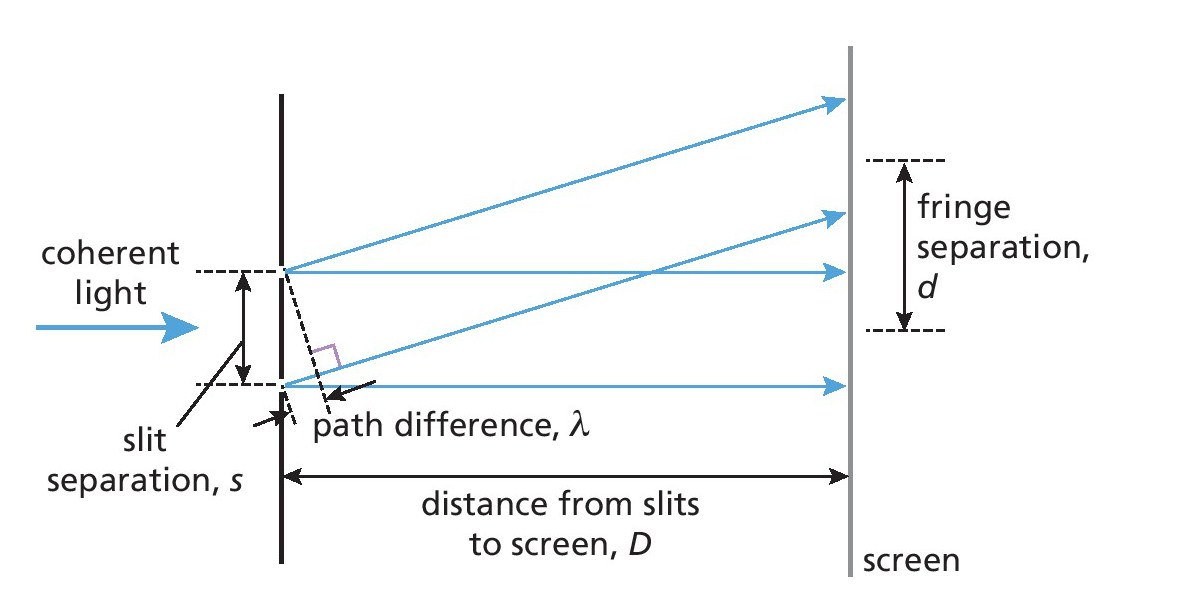
The exam boards for A-level physics require or suggest a number of practical activities that will allow you to satisfy the Common Practical Assessment Criteria (CPACs). Among other requirements, you are expected to be able to make accurate observations relevant to the experiment, to obtain accurate, precise and sufficient data, and record these methodically using correct units and conventions, and to use ICT with appropriate software to process data. Investigating the interference pattern caused by coherent light passing through a pair of narrow slits — often referred to as Young’s slits — gives an excellent opportunity to practise all these skills.
In 1801 the physicist Thomas Young carried out an experiment that was fundamental in establishing the wave-like properties of light. He passed coherent light, obtained by using a single, narrow slit, through a pair of slits and observed the resulting interference pattern. This pattern consisted of a series of dark and light areas, or fringes, caused by the constructive and destructive interference of the light waves. From this pattern he was able to calculate the wavelength of light.
Your organisation does not have access to this article.
Sign up today to give your students the edge they need to achieve their best grades with subject expertise
Subscribe




